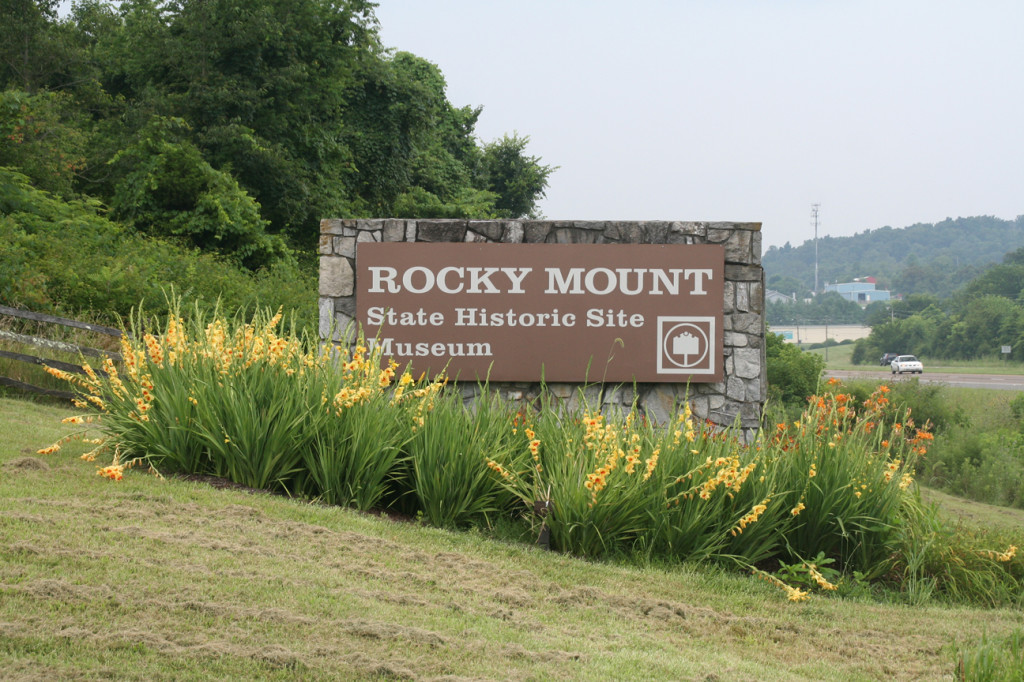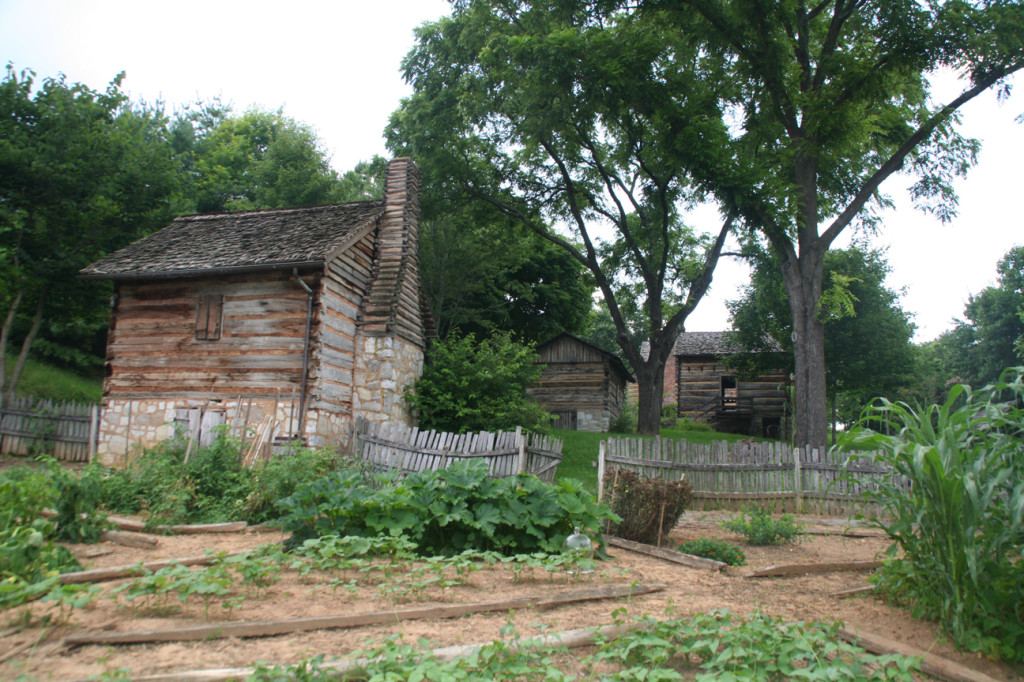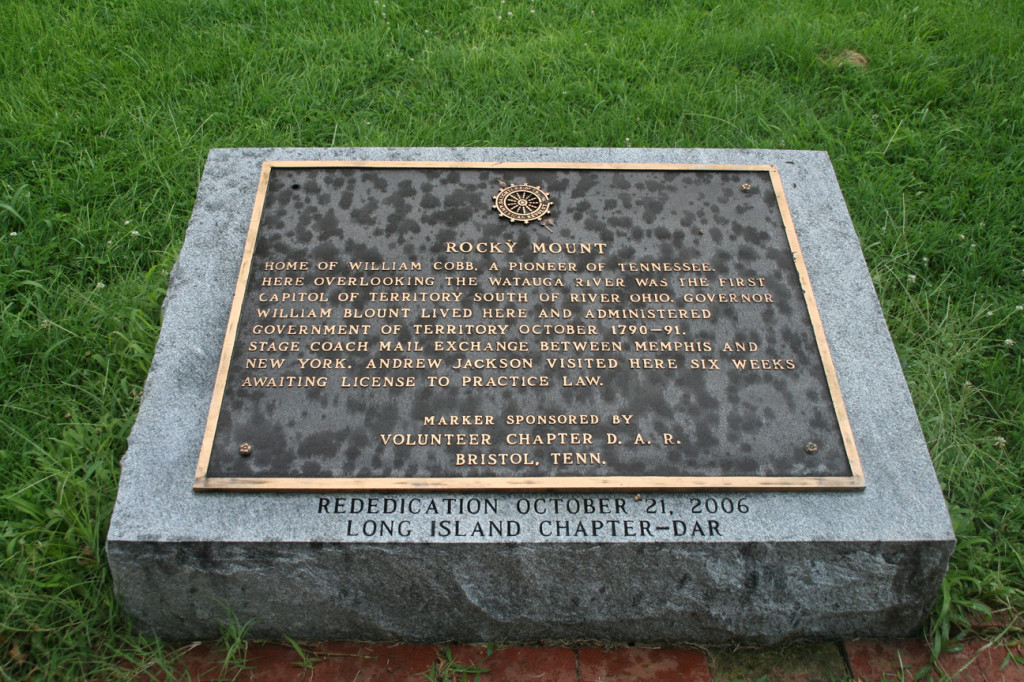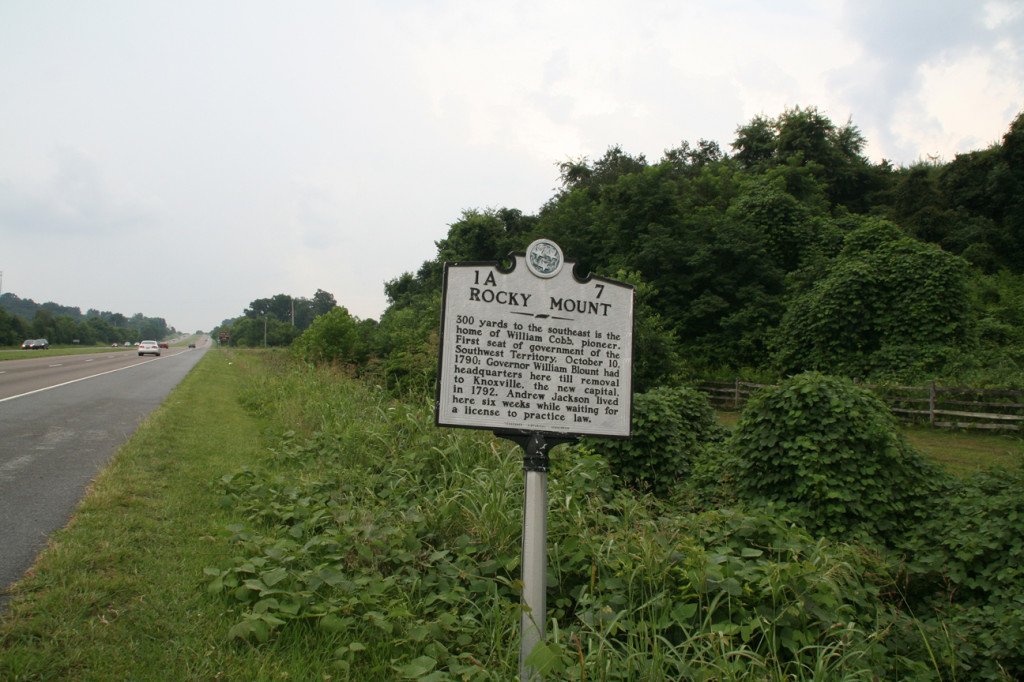Rocky Mount
From the Rocky Mount Living History Museum website:
“William Cobb brought his family from North Carolina and built his two-story log structure between 1770-1772. During the Revolutionary War, Cobb helped to supply the ‘Over-Mountain Men’ with gunpowder, horses, blankets, and food on their way to the Battle of Kings Mountain. He and two of his sons joined the march to North Carolina where the American forces won a great victory.
“In 1790 the land that Cobb had settled became known as the Southwest Territory. The Territory was formed from land that was originally a westward extension of North Carolina. The people of the area wanted to split away and become independent. They attempted to form their own state, called it the State of Franklin, for Benjamin Franklin, and elected John Sevier Governor of the state. The Lost State of Franklin was never recognized by the Federal government and was dissolved. Cobb mostly kept himself above local politics, which seemed to make his home an ideal spot to house the Governor of the Southwest Territory, William Blount. Blount was appointed governor by George Washington and lived with the Cobb family from 1790 until 1792, making Rocky Mount the first Territorial Capital of the Southwest Territory, which became the State of Tennessee in 1796.
“William Cobb and his wife, Barsheba (Whitehead), moved to what is now Knoxville in 1795 (at that time it was in the Grainger County area.) They left Rocky Mount to their daughter, Penelope, who had married Hal Massengill. Rocky Mount stayed in the family and passed down through the generations until 1958.
“The log house has been modernized several times. The logs were covered with clapboard siding, and the roof was tinned over the original shingles. However, there was still no indoor plumbing and the original structure was mostly intact beneath the exterior changes.
“Pauline DeFriece, cousin of the owner of Rocky Mount, John Massengill, believed that the building should be preserved by the state and be opened to the public as a shrine to the memory of the early settlers of the region. She set in motion the chain of events that lead to the purchase of Rocky Mount by the state of Tennessee. She also established the Rocky Mount Historical Association, the organization that maintains and operates the site to this day.
“Rocky Mount opened to the public with few visitor services on April 1, 1962. A small Visitor Center was built with space for a receptionist, 5000 square feet of gallery space and a caretakers apartment was added in the mid 1960s. A separate home for a caretaker was built in 1975 and the visitor center expanded to include a museum store in 1979. In 1990, a 175 seat auditorium with video output, library, and 5 classrooms were added.
“The historic site was also expanded to include a kitchen, spring house and slave cabin, barn, orchard and gardens in an effort to enhance the living history atmosphere of the Cobb farm.”
Watch “Tennessee Crossroads” on YouTube, episode “Rocky Mount” 2503-3.
The Rocky Mount Museum is located at 200 Hyder Hill Road, Piney Flats, TN 37686.
Penelope Cobb, Hal Massengill, Hal’s second wife Elizabeth Emmert, and a number of their children are buried at the Massengill family cemetery, located about 3/4 mile south of Hyder Hill Road and Highway 11E/19W.
The marker above commemorates Rocky Mount and William Cobb, and was placed by the Volunteer Chapter, National Society Daughters of the American Revolution. It was rededicated 21 October 2006 by the Long Island Chapter, NSDAR. Photo July 2013 by Sharon Steele-Smith (apologies for the splattered look of the monument – it started to rain just as we arrived!)
“Rocky Mount. Home of William Cobb, a pioneer of Tennessee, here overlooking the Watauga River was the first capitol of territory south of River Ohio. Governor William Blount lived here and administered government of territory 1790-91. Stage coach mail exchange between Memphis and New York. Andrew Jackson visited here six weeks awaiting license to practice law.”
“300 yards to the southeast is the home of William Cobb, pioneer. First seat of government of the Southwest Territory, October 10, 1790: Governor William Blount had headquarters here till removal to Knoxville, the new capital, in 1792. Andrew Jackson lived here six weeks while waiting for a license to practice law.” Tennessee Historical Commission, marker #1A-7.





A great historical piece. My girlfriend here in AZ is a direct descendant of the Sevier family.
good job.